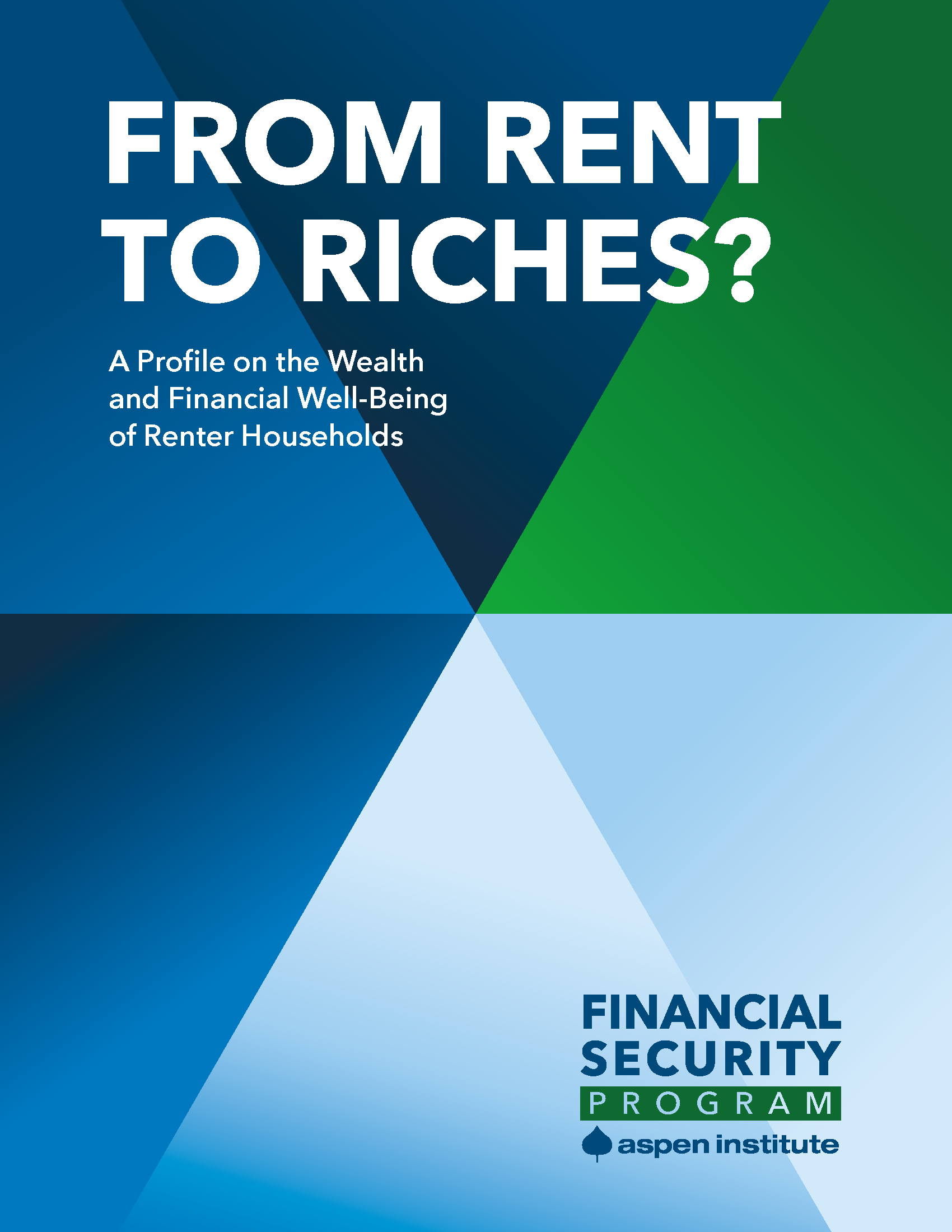There’s a lot of big and bold thinking going on these days among my colleagues at the St. Louis Fed and the Aspen Institute Financial Security Program.
At early May’s Asset Funders Network conference, Aspen’s Financial Security Program Executive Director Ida Rademacher observed that the field’s well-intentioned and commendable efforts to reduce hardship and make it “less expensive to be poor” have unintentionally led to a “transactional rather than a transformational mindset about the goals of this work.” That the field’s good solutions were “palliative rather than curative,” and that its necessary and laudable efforts to respond to adverse financial volatility and shocks in the shorter-term have detracted from the field’s underlying and more fundamental challenge of achieving financial well-being in the longer-term. The challenge, Ida memorably observed, is not unlike responding to extreme weather (hurricanes, tornadoes, floods, etc.) at the expense of tackling climate change, which of course contributes, in part, to extreme weather. She noted, “We cannot resolve either the short- or long-term financial challenges families struggle with today until we address the underlying issues that are shrinking both the income and wealth shares of American workers.” That’s correct, and of course requires, inter alia, a broader distribution of productivity gains, larger and more targeted investments in human capital development, and stronger mediating institutions—all bold and ambitious goals themselves.
Then in late May, my colleagues at the St. Louis Fed’s Center for Household Financial Stability, William Emmons and Lowell Ricketts, publicly argued that “structural” responses—such as permanent desegregation of housing and schools, affirmative action in education and employment, and rigorous and targeted financial education and consumer protection—were needed to address the large and persistent racial wealth gap in the U.S., itself heavily influenced by group norms which may reflect structural and systemic barriers accumulated over centuries. This was bold because Bill (our Center’s lead economist) and Lowell (our Center’s lead analyst) sharply challenged the predominant but debatable “post-racial” assumption among economists—and certainly among Fed economists—that blacks and whites face similar choices and opportunity structures, implying that if blacks simply chose as well as whites have they would have more wealth. Well, the racial wealth gap is too large and too persistent for freedom of choice and equality of opportunity to be plausible; more plausible is that each group has distinct shared experiences that in turn shape their opportunities to build wealth. So we have to reshape those structures that shape opportunity—also bold and ambitious goals.
Thankfully, we’ve faced daunting challenges before and yet managed to achieve “bold and ambitious” reforms: in America’s Progressive Era, that roughly 30-year period beginning with the depression of the early 1890s.
As Phil Longman and I describe in our 2009 book, The Next Progressive Era, the late 19th century was an era of rapid technological change; stunning advances in science; rising fundamentalism; gaping inequality; double digit unemployment; networks of violent non-state actors; a health care system in crisis; a new era of infectious disease; massive consolidation among corporations; new mediums spreading violent and obscene images; widespread, nefarious lending practices and rising debt levels among the middle class; and development of a massive, cheap energy source along with mounting concerns about the environment. Sound familiar?
Now let me share with you some of what Progressives achieved and the enduring institutions they created: They seriously reduced the role of money in politics; reformed the health care system; dramatically reduced rates of infectious disease; tamed the drug industry; created a regulatory regime for Wall Street and the banking sector that prevented any need for massive taxpayer bailouts, including the creation of the Federal Reserve System; stopped predatory lending; created credit unions; enacted the Pure Food & Drug Act and the consumer safety movement; instituted the federal, progressive income tax system; forestalled the growth of terrorism and rationalized immigration; engineered a massive conversion to cleaner, cheaper energy; restored public trust in government; ended child labor; gave women the right to vote; universalized public high school education; instilled an ethic of thrift, conservation and public service; and left no legacy of public debt. Not bad, huh?
Of course, the Progressives failed on many fronts as well. But we can be inspired by and learn from them, especially their commitment to relentless experimentation. This actually might be the most important lesson for today’s big thinkers. Progressives certainly had big, bold and ambitious ideas, but their national reforms were more often achieved by first trying and scaling-up smaller innovations at the local and state levels. Among the most prominent experiments was the “Wisconsin Idea,” which pioneered policies for worker’s compensation, progressive income taxes, the direct election of Senators, protections against police brutality, and prohibiting pollution, to name a few.
So, yes, think big—and think small. And by small I don’t mean a small idea, but a big idea that starts as a small or modest innovation—a regulatory, product, or program tweak (e.g., changing a savings default settings from opt-in to opt-out), or a policy innovation (e.g., starting a 529 college savings automatically account at birth)—that could become the basis for state and national policy. Indeed, states have always been laboratories of democracy, and may even be more so in the current environment. So let’s keep pursuing those new, testable and scalable ideas that increase income and wealth shares for workers on the wrong side of globalization. And let’s keep thinking about the modest but scalable innovations that reshape economic opportunity for struggling Americans.
Of course, it’s hard to know when the stars will align to make it possible for modest innovations to become big, bold national policies. But being ready for that moment is key for, as Mark Twain is said to have observed, history may not repeat itself, but it often rhymes.

